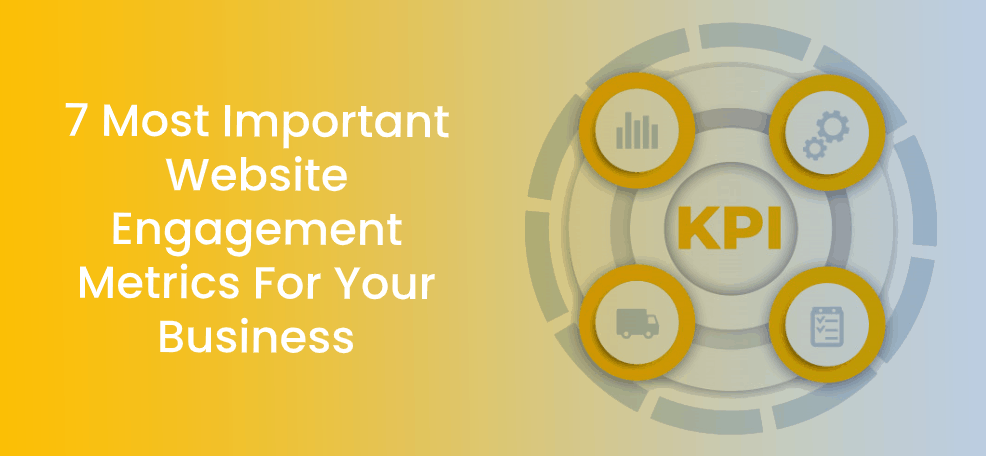In the digital age, having a website for your business is essential, but simply having a website isn’t enough. It’s crucial to measure website engagement metrics to gauge the success of your website and optimize it for a better user experience.
Creating a website as one of the channels where your business operations will take place is really just the beginning.
Because yes, you did, you made a website and now what?
What is the next step?
First, you will fill it with good content that will be of interest to your target audience. Then, you will make sure everything works flawlessly so that you do not turn people away.
These are just some of the important points. Let’s be honest, the work never stops.
In order to run your business successfully and within your website, you need to be constantly up to date with what is happening on and around it.
Without analysis and monitoring, you lose awareness of your own position and this is where the chaos that you certainly do not want to fall into begins.
Fortunately, if you diligently follow important website engagement metrics, you will not only prevent chaos from ever occurring but also allow your business to thrive and leave your competitors far behind.
These website engagement metrics will show you how many visitors come to your website, what they do, and how they behave. Thanks to these results, you will know what are you doing right and what needs to be changed as soon as possible.
Let’s see which are the 7 most important website engagement metrics that should become a mandatory part of your analysis.
1. How many website visitors do you really have?
When it comes to your website visitors, the two basic things you can follow are:
- Unique website visits
- Total website visits
The number of unique website visits represents the number of visitors who came to your website in a given reporting period.
That is, if one of your visitors comes to your website on Monday and then again on Tuesday, the web analytics platform will recognize that it is the same IP address and those two visits will count as one.
Unlike unique website visits, total website visits account for absolutely each and every website visit.
However, it should be noted that the method of calculating unique website visits may not always be accurate. Most web analytics platforms remember those visits with the help of cookies, and if a visitor deletes cookies even though they have already visited the website the new visit will be counted as well.
Therefore, it is recommended that you pay more attention to the total number of website visits that will give you a more realistic picture of your website visits in general. Learning the basics of web analytics will help you understand how to calculate unique visitors and total website traffic.
2. Number of returning visitors
The percentage of returning visitors is another important metric as it shows how interesting your website is to your target audience and, therefore, how you stand when it comes to their loyalty to your website.
New visitors are the ones who first appear on your website, and returning visitors are the ones who return.
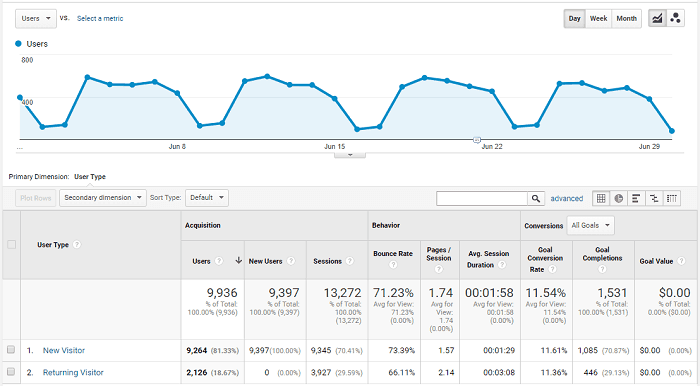
Source: Analytics Edge Help
Google currently remembers visitors for a time frame of two years.
This means that if someone visited your website during that period, they would be considered a returning visitor. If he visited the website before that period of time, he would be among the new visitors.
For example, if you find that the number of returning visitors is significantly higher than the number of new visitors, it means that you should keep the strategy you are currently using but also focus on bringing in new visitors, and vice versa.
Statistics show that 30% of returning visitors is good and 50% is great, but as many others point out, it depends on your website, the industry you are in, and what your site goals are.
3. Average session duration & average time on page
A session is actually a visit to your website, and the average session duration is the average time visitors spent on the website during those sessions.
Databox explains how Google Analytics calculates this time: Google Analytics calculates the average session duration by dividing the total duration of all sessions (in seconds) during a specified time frame by the total number of sessions during that same time frame.
Unlike average session duration, the average time on page counts how much time a visitor spent on a specific page of your website.
Most websites, when a visitor pays a certain amount of attention and spends some time on the page, have popups that will appear and intensify his interest.
For example, the window can pop up after a certain scroll percentage. You can use the Poptin tool to insert pop-ups easily into your website. With them, you can increase visitors’ engagement.
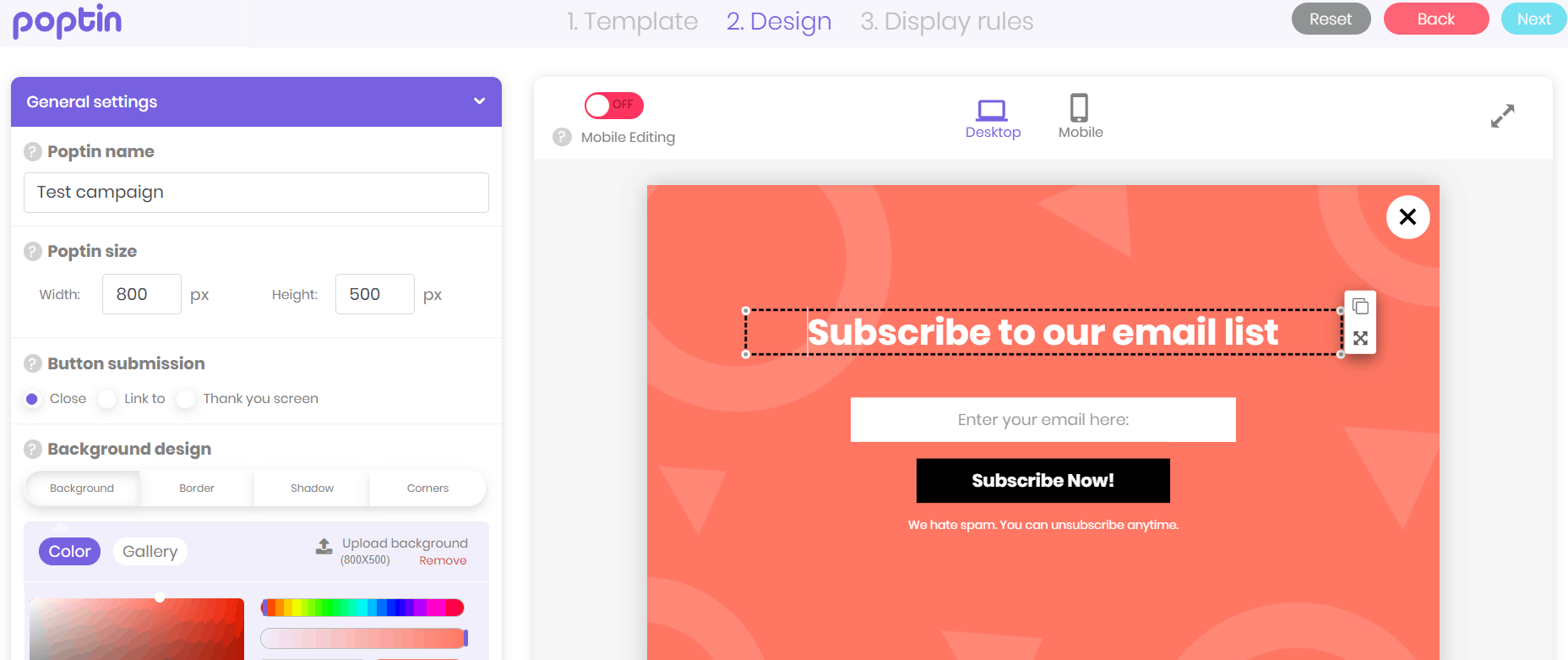
For more accurate analytics and better insight into what’s happening on your website, it is a good idea to observe both of these website engagement metrics, average session duration and average time on page.
4. Pages per session
Pages per session is another important website engagement metric. It shows how many website pages a visitor visited while on the website.
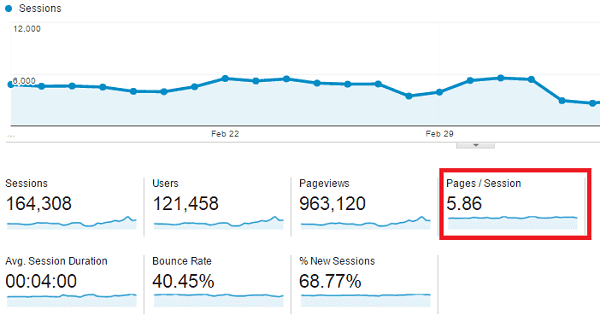
Source: VMC Communications
The more pages he visits, the more interested he is and wants to find out what else is on the website.
However, if a visitor visits a large number of pages, but stays on each one of them briefly and eventually leaves, it may mean that he still did not find what he was looking for.
So make sure everything on the website is clear and user-friendly so that visitors would stay on it as long as possible.
Longer retention time can have a positive effect on your SEO ranking.
5. Bounce rate
Bounce rate is another important metric that measures the percentage of users who leave your website after only viewing one page. A high bounce rate may indicate that users are not finding what they’re looking for, or that your website is not user-friendly.
According to research, as page load time goes from 1 second to 5 seconds, the probability of bounce rate increases by 90%.
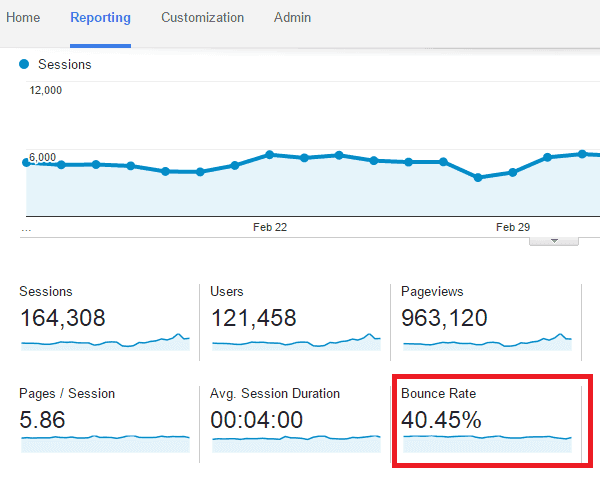
Source: Digital Prosperity Blog
There are many reasons why people are leaving your website, and only a few are:
- They didn’t find what they were looking for.
- The page was loading too slow.
- The website is not user-friendly.
It should be kept in mind that slow page load is just one of the items to consider when trying to keep people to stay on your website.
In any case, a high bounce rate is a bad sign and it tells you that you need to revise and correct any errors on the website urgently in order to reduce that number.
6. Goal completions
This Google Analytics website engagement metric shows how many times your visitors completed a specific goal. Of course, before that, you have to determine what goals they are to complete.
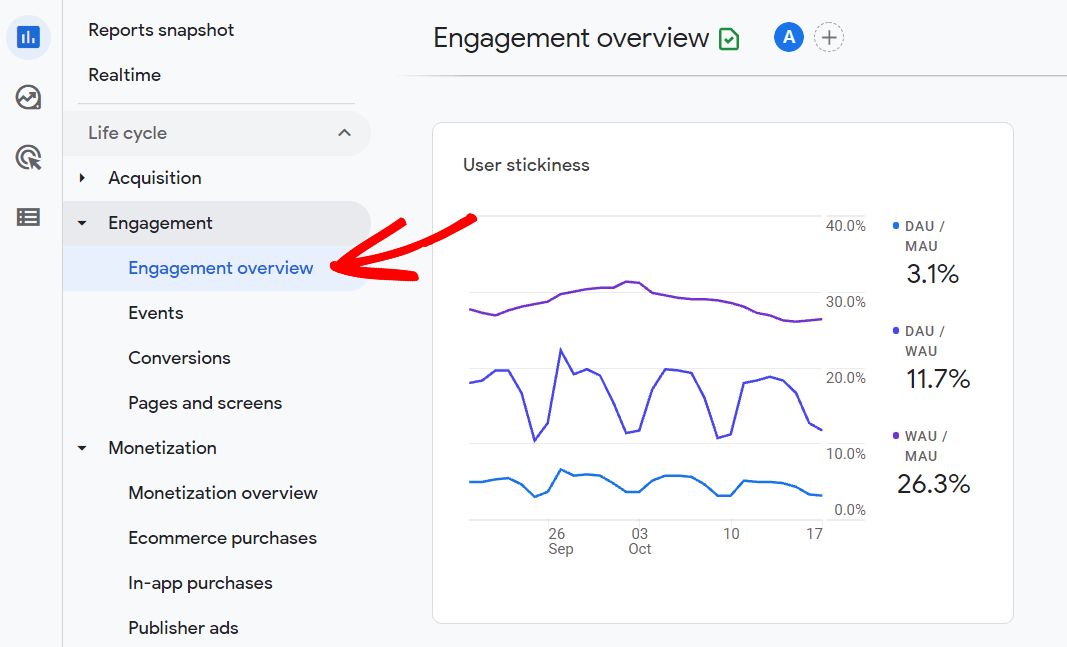
Source: MonsterInsights
The goals can be different:
- Click on a specific link
- Purchase
- Subscriptions
There are many goals that you can set for your visitors to accomplish, but they must be presented as clear as possible so that they would not confuse people.
For example, if you want a visitor to subscribe to your newsletter, you can set up a subscription form on your website very easily and it will guide them through the steps they need to take to complete the goal in question.
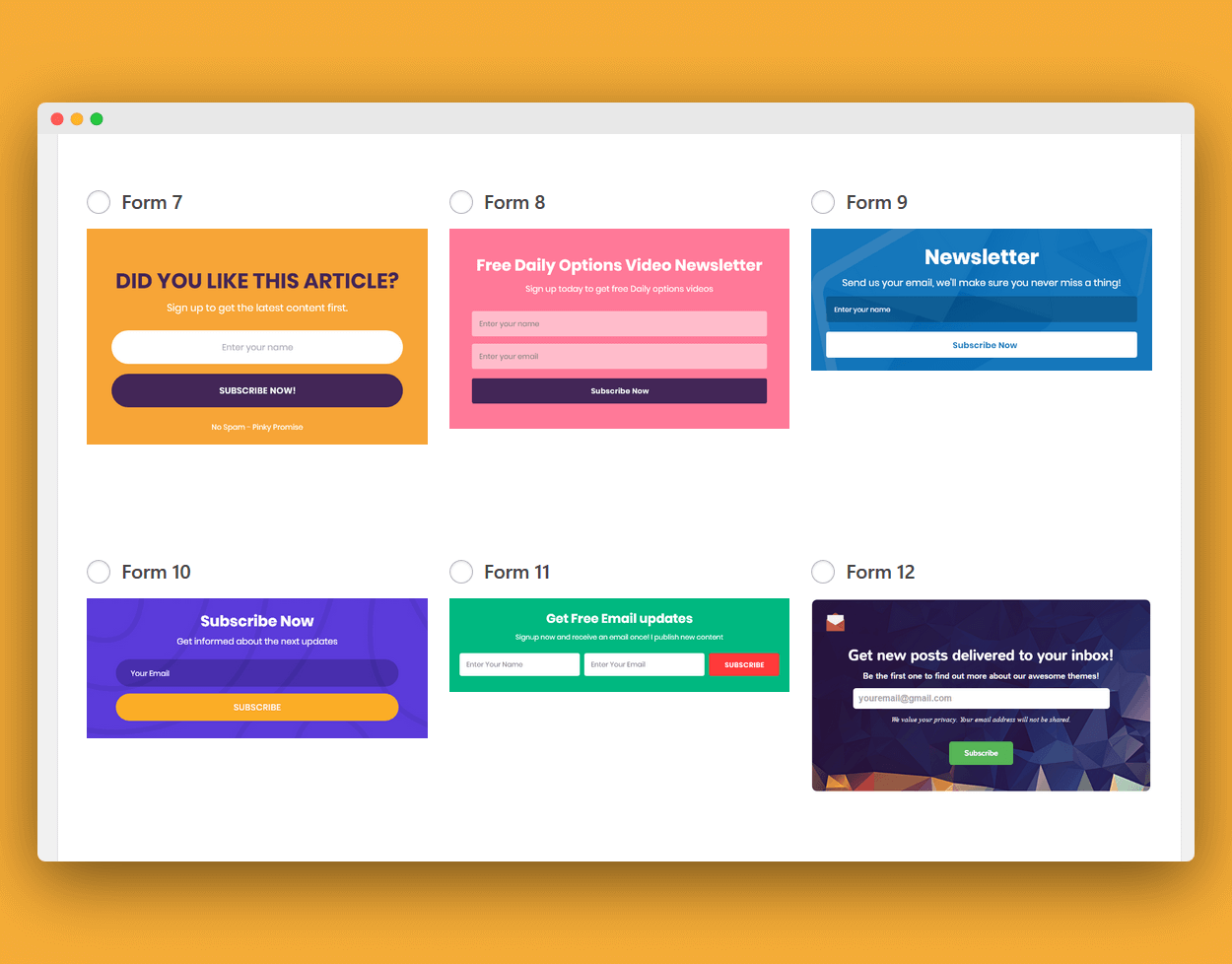
A number of successfully completed goals will appear in Google Analytics so you can keep track of what’s happening exactly.
If the number is unexpectedly low in contrast to the number of visits, try setting the goal differently. It is important that you test the various options until you reach the one that will be the most successful one.
7. Abandonment rate
A particularly important metric for an e-commerce business is cart abandonment rate or just abandonment rate.
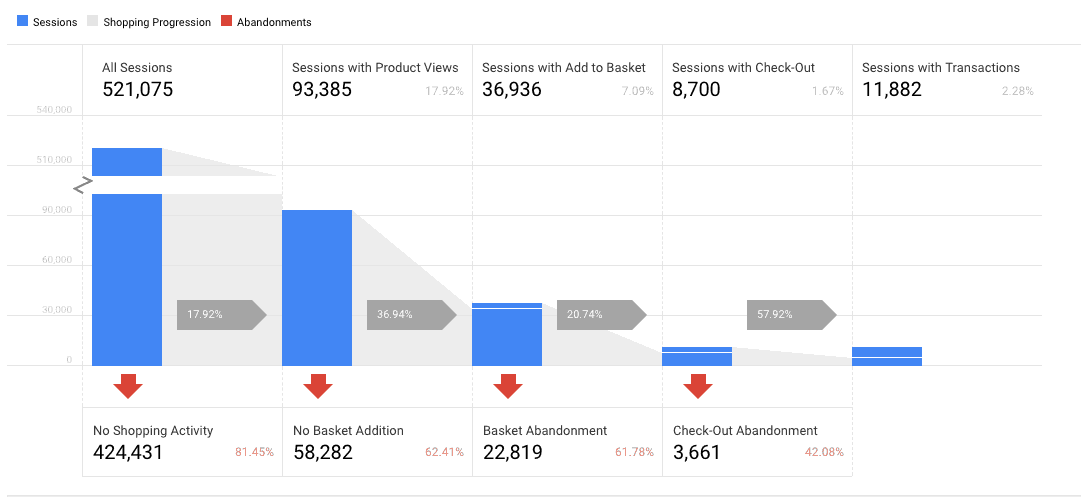
Source: SaleCycle
It represents the percentage of people who came to a shopping cart page, inserted items, and then left the page before completing a purchase versus those who completed it successfully.
Experts advise that emailing those who give up just before the end of a purchase would be good practice to “remind” potential buyers to actually make that purchase.
Abandonment rate helps you gain a better understanding of your visitors’ behaviour.
If there is a large number of those who give up their purchases, make sure everything is in order with your purchasing process. There may be some ambiguities or high costs that encourage people to give up buying.
Logically, the lower the abandonment rate, the more your revenue will increase.
8. Conversion rate
This is probably one of the most important website engagement metrics out there.
Why?
Because it directly tells you how successful your website is in converting your users into paying customers.
In a nutshell, the conversion rate is the percentage of people who signed up for your product/service/material and people who visited your website or some particular web page.
There are some average conversion rates for all industries. But in any industry you are – we can say that the great conversion rate is any conversion rate above 10 – 15% of all website visitors.
Don’t be sad if your conversion rate is below this. There are certain things you can do to improve it – such as creating eye-catchy, compelling, context-driven and irresistible popups.
The Bottom Line
Monitoring important website engagement metrics is a must if you want to get serious about your business.
These metrics will let you know what your visitor behaviour is and whether your website is user-friendly enough.
Quality content is a priority, but you must shape it so that it is understandable, clear, and visually appealing to your visitors. The same applies when you form different goals that are desired for your visitors to fulfil. Try Premio subscription forms to create clear goals.
Also, to make the website more engaging for your visitors, set up effective popups that will further interest your target audience and keep them engaged.
Websites today are like corporate and online businesses’ identity cards. If you follow these website engagement metrics, you will see how important they can be for your business to move forward.
Take advantage of Google Analytics results and create a website that will be a must-stop for your target audience!
